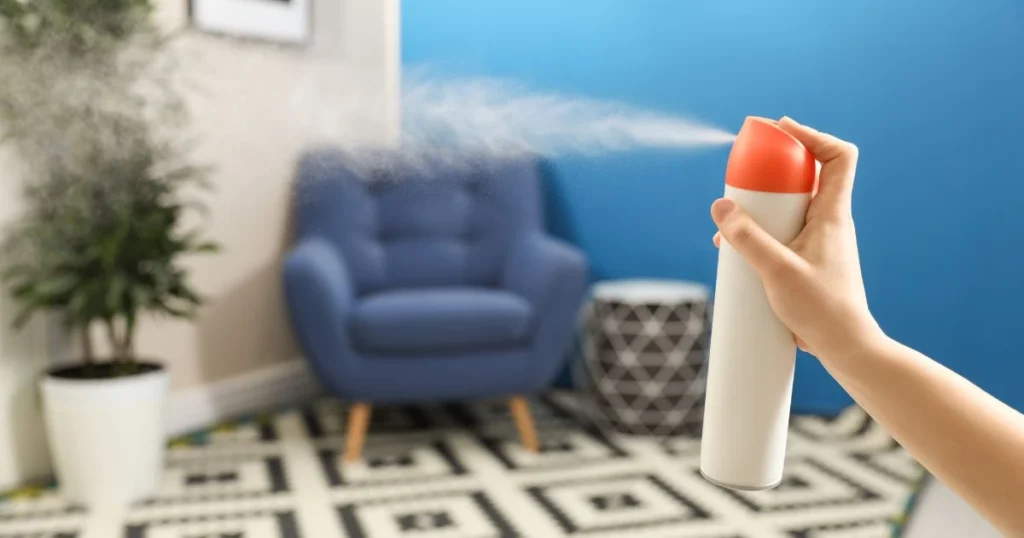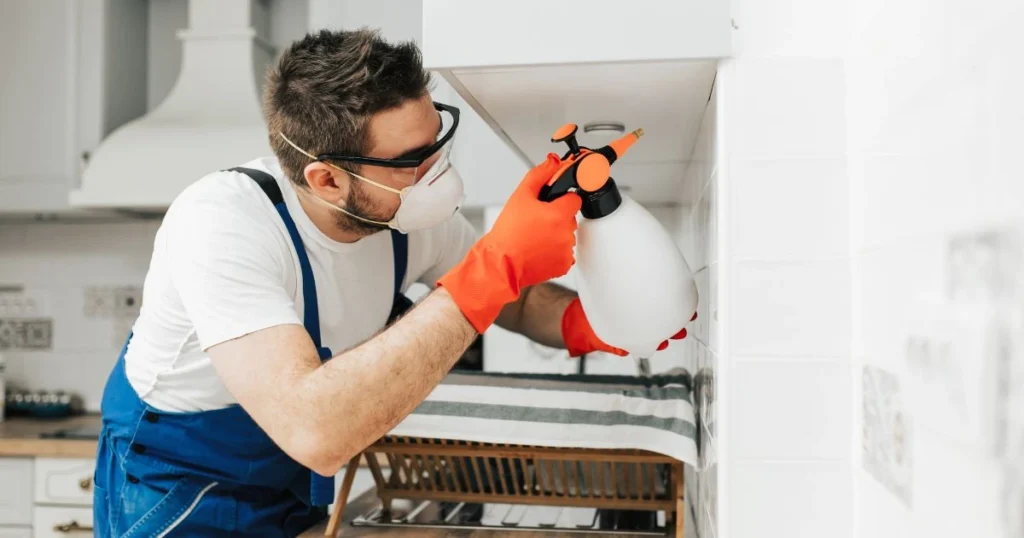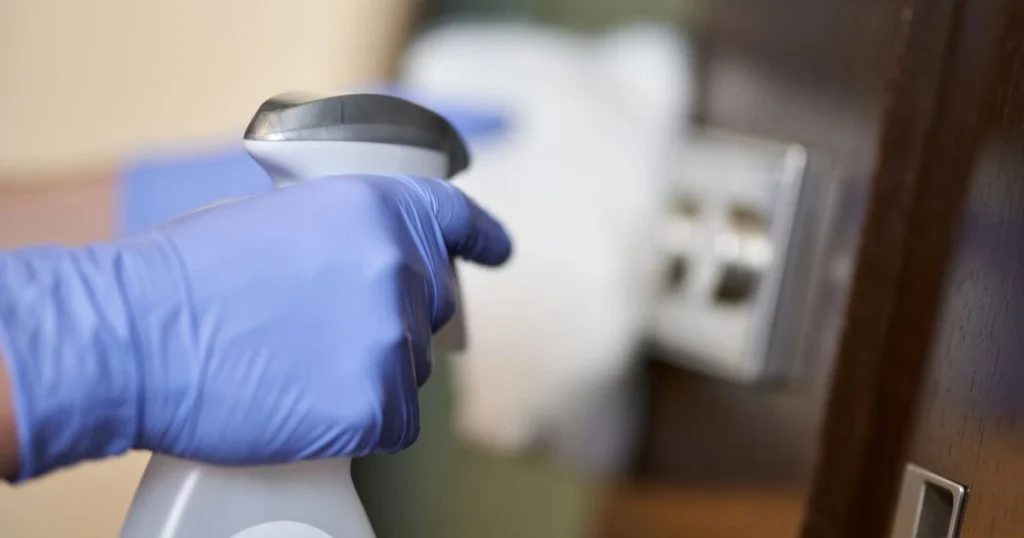
Fleas can be a persistent problem, especially in homes with pets. Many homeowners may overlook the infestation's impact beyond carpets and rugs, as furniture can harbor these pests. An effective flea spray for furniture is essential to eliminate fleas and prevent their return.
Finding the right flea spray means looking for products specifically formulated for furniture. These sprays can penetrate upholstery fibers, targeting fleas at their source and breaking the lifecycle to ensure a thorough treatment. Regularly applying flea spray can provide peace of mind, ensuring that pets and residents are safe from these irritating insects.
It is crucial to incorporate flea prevention measures into routine cleaning habits. Vacuuming furniture regularly and following up with flea spray can create a comprehensive defense against infestations, keeping the living space comfortable and pest-free.

Fleas are small, pesky parasites that can significantly discomfort pets and humans. Their unique life cycle and preferred habitats often allow them to thrive in home environments, particularly furniture and upholstery.
Fleas progress through four life stages: egg, larva, pupa, and adult. An adult female flea can lay up to 50 eggs daily on a host or in the surrounding environment.
Understanding this cycle is crucial for effectively using flea spray for furniture and upholstery to interrupt breeding.
Fleas are commonly found in areas where pets spend time. Key locations include:
Regular cleaning and the use of flea spray for bedding and upholstery are essential to controlling infestations. A comprehensive approach targeting the home's specific habitats enhances flea treatments' effectiveness. Attention to detail ensures that these areas are thoroughly treated for maximum impact when flea spray is applied to furniture.

Choosing the appropriate flea spray for furniture involves understanding different types, ensuring safety, and assessing effectiveness. Each factor contributes to a successful flea control strategy while protecting living space.
Flea sprays for furniture are typically categorized into two main types: natural and chemical.
Understanding these types helps select a product that aligns with personal preferences for safety and effectiveness.
Safety is crucial when selecting flea spray for furniture. Before using any product, it is essential to read the label for directions and safety instructions.
Taking these precautions minimizes risks while effectively addressing flea infestations.
Assessing the effectiveness of flea and tick spray for furniture involves multiple criteria:
Evaluating these factors aids in selecting the right spray, ensuring immediate results and long-term control.

Applying flea spray for furniture, upholstery, and bedding requires careful attention to detail to ensure effectiveness and safety. Adhering to specific application guidelines can enhance results and minimize risks.
The area must be prepared before applying flea spray. To avoid exposure to chemicals, remove pets and children from the vicinity. Wear protective gear such as gloves and masks if recommended on the product label.
When spraying, hold the can 12 to 18 inches away from surfaces. Evenly coat the targeted areas but avoid saturating them. Pay special attention to seams, corners, and crevices where fleas may hide. Always test a small, inconspicuous area on furniture or upholstery to ensure no damage or discoloration occurs.
Reapplication frequency depends on the specific flea spray product. Most manufacturers recommend reapplying every two to four weeks for untreated areas. A shorter interval might be necessary if reapplying after heavy infestations.
Monitoring the treated areas for flea activity is essential. If fleas persist after the initial treatment, consider using additional pest control measures. Always follow the manufacturer's instructions regarding specific reapplication guidelines to maintain efficacy.
Adjustments may be necessary when treating different surfaces. For upholstery, gently move cushions and fabric to ensure thorough coverage. Spray lightly to avoid soaking and allow adequate drying time.
It is crucial to wash all bedding before spraying. After washing and drying, apply a flea and tick spray to the mattress and box spring, focusing on seams and folds. Let them dry completely before replacing the sheets.
A different approach may be required for hard surfaces. Use a cloth to spray these areas directly, avoiding overspray on carpets or fabrics. Always ensure the surface is safe for the specific product being used.
Fleas can thrive in pet bedding, leading to pet discomfort and potential home infestations. Proper care and treatment can help eliminate these pests and reduce the likelihood of their return.
When selecting a flea spray for pet bedding, choosing safe animal products is essential. Look for sprays labeled as non-toxic or pet-safe. Ingredients such as natural oils (like cedar or peppermint) can effectively deter fleas without harming pets.
Always follow the manufacturer's instructions regarding the application. To avoid direct contact with the spray, treat the bedding while the pet is not nearby. Additionally, consider using a spot test on a small fabric area to ensure no adverse reaction. Regular application may be necessary to maintain a flea-free environment.
In addition to using flea spray, washing pet bedding regularly is crucial in managing flea populations. Machine wash bedding in hot water, ideally around 130°F (54°C). This temperature helps kill any eggs, larvae, or adult fleas present.
Consider using a steam cleaner to sanitize items that cannot be machine-washed. Frequent vacuuming of the bedding area can also help remove fleas and their eggs. Immediately dispose of the vacuum bag or clean the canister to prevent re-infestation. Incorporating these methods into regular cleaning routines will significantly reduce the risk of fleas returning.

Taking proactive steps can significantly reduce the risk of flea infestations. Implementing regular cleaning and effectively flea-proofing a home are essential strategies.
Establishing a consistent cleaning schedule is key to preventing fleas. Regularly vacuuming carpets, rugs, and upholstered furniture can remove flea eggs and larvae before they mature. Focus on areas where pets frequent, as this is where fleas tend to thrive.
When vacuuming, dispose of the vacuum bag or empty the canister outside to prevent fleas from re-entering the home. In addition to vacuuming, regularly washing pet bedding and blankets in hot water is crucial. Doing so can eliminate fleas and prevent them from spreading.
Using a flea and tick spray for furniture may also be beneficial. These sprays are designed to kill fleas on contact and provide lasting protection. Ensure you choose products that are safe for household use.
Flea-proofing a home involves several strategic measures. Sealing gaps and cracks in floors and walls can prevent outdoor flea entry. This includes checking door sweeps and window screens for any damage.
Consider treating outdoor areas where pets spend time with flea and tick spray for bedding and furniture. Maintaining a pest-free yard can significantly reduce the chances of fleas making their way indoors.
For additional peace of mind, homeowners can consult with professionals like Critter Stop for expert advice. They have a fantastic reputation and online customer reviews because they provide high-quality work and great customer service. Calling Critter Stop at (214) 234-2616 can lead to a free inspection to help identify and solve pest issues.
This section addresses common inquiries regarding flea spray for furniture, focusing on effectiveness, safety, and application methods. The information provided aims to help users choose the right products and utilize them effectively.
Some of the most effective flea sprays contain active ingredients like permethrin or pyrethroids. These compounds target adult fleas and their eggs, rapidly reducing infestation levels. Users should look for sprays specifically labeled for furniture use to maximize effectiveness.
Flea sprays containing natural ingredients, such as nontoxic botanical extracts, are typically safe for fabrics. Products labeled as fabric-safe or using water-based formulations minimize the risk of discoloration or damage to bedding materials.
Following the manufacturer's application instructions must be followed meticulously for long-lasting protection. Spraying from a distance of 12 to 15 inches ensures even coverage. Treating surrounding areas where the spray can create a barrier against reinfestation is also advisable.
Spot testing in a concealed area is recommended to prevent damage to upholstery. Using a cloth or sponge can help apply the spray gently rather than soaking the fabric. Light applications in well-ventilated areas help reduce the risk of oversaturation.
Effectively formulated flea and tick sprays for bedding can deter future infestations. Applying these sprays regularly helps maintain a pest-free environment and can kill any newly introduced fleas before they become problematic.
It is advisable to use flea spray for dog bedding every two to four weeks, depending on the severity of the infestation. Increased frequency may be necessary during peak flea seasons or if there is a higher likelihood of exposure.
When selecting flea sprays, look for those labeled as pet-safe or containing natural ingredients. Essential oils such as cedarwood or lavender have pest-repelling properties and are generally safer for households with pets. Always check the label for any warnings regarding pet safety.
Visit our Critter Library and learn more about our furry friends